All Saints Church may not be with us (in its present form) much longer. This article offers some documentation of its state in 2012.
By Gerard V. Middleton
Published March 12, 2012
This article provides photographs of All Saints Church, and of two other churches with similar masonry: Carisma (Church of St Thomas) and the Hughson Street Baptist Church. All three buildings were among the earliest constructed in Hamilton, using Eramosa dolomite rather than Whirlpool sandstone.
All Saints Church may not be with us (in its present form) much longer. In view of the diminished congregation (some 60-70 attended each Sunday) and the need for expensive renovations, the decision to demolish the church seems inevitable.
The parishioners are making serious efforts to preserve some aspects of its heritage. This article offers some documentation, however inadequate, of its state in 2012.
The Church (15 Queen Street at King West) was built in 1872-1873 (Henley, 1994, p.36), and enlarged in 1909. It was consecrated in 1880, after several years of use as a "Chapel of Ease." The stone is mostly Eramosa dolomite, similar to that of the Church of the Ascension Hall. Whirlpool sandstone was used for the sills, lintels, and probably also the carved voussoirs above the Gothic windows.
The stones in the walls are very variable in size and quality, some show considerable crinoid debris and may be from the local Gasport, and others are oriented with the bedding vertical. A few include some chert. A few blocks of Whirlpool, some in vertical orientation were also included.
The eastern addition built in 1909, includes large lintels or voussoirs of white limestone, probably Indiana limestone, many of which have developed cracks. The bell tower was damaged in an earthquake in 1998, and was taken down the following year.
The entrance where the tower was located has brick voussoirs, and inferior stone work. For a postcard showing the appearance of the church before the tower came down see Henley.
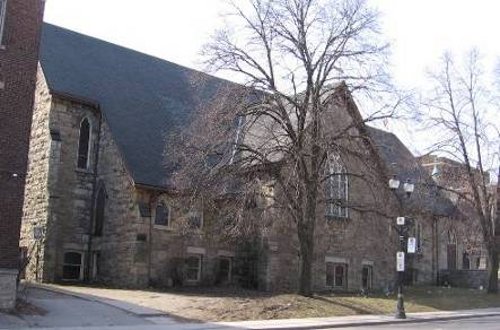
Figure 1: All Saints Church, the north side (on King Street)
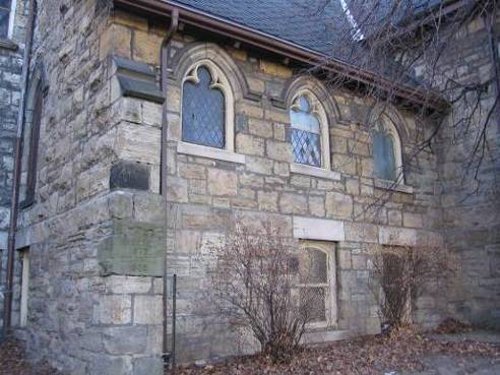
Figure 2: The east extension of the Church, built in 1909 (detail of Figure 1)

Figure 3: The central, north wing of the Church.
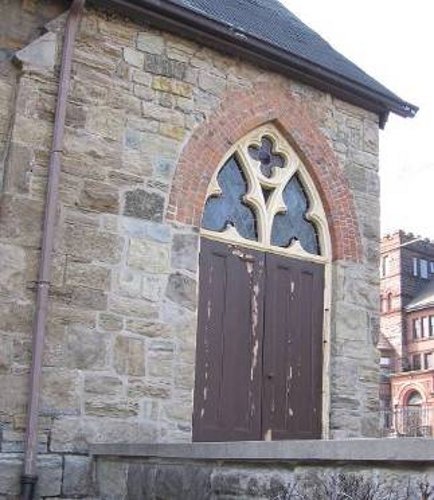
Figure 4: The doorway at the northwest corner, which was constructed after the tower was removed in 1998. Brick was used in place of stone voussoirs, and the repaired masonry shows inferior workmanship.
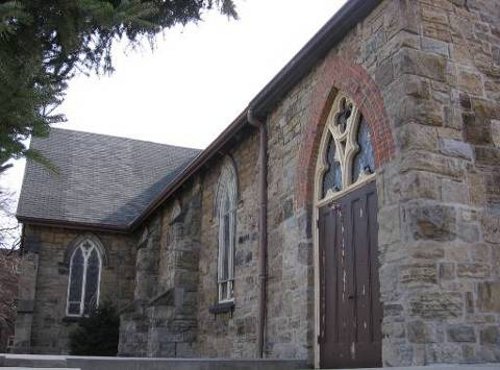
Figure 5: Another view looking east from the northwest corner.
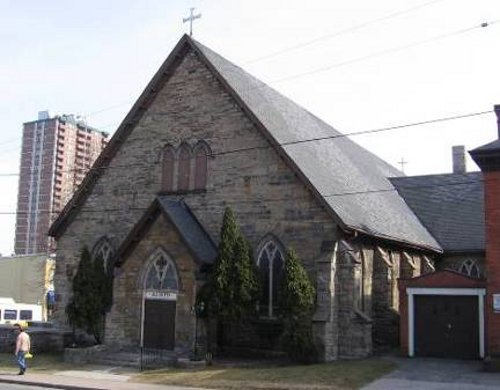
Figure 6: The west side
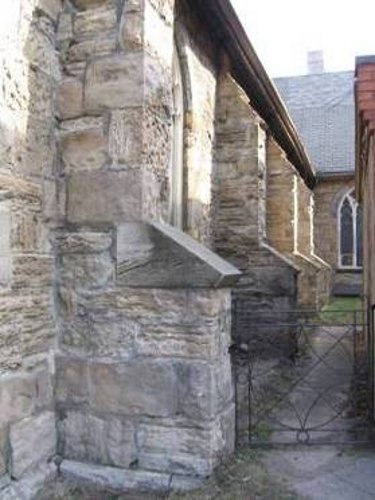
Figure 7: the south side, with a row of buttresses.

Figure 8: Detail of a buttress, showing cross-bedding in the Whirlpool sandstone cap
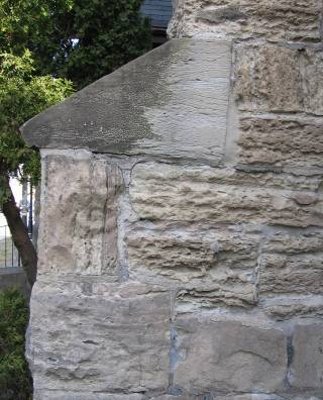
Figure 9: Detail of another buttress: below the cap are two blocks of Eramosa dolomite, on the right the bedding is horizontal, on the left it is vertical.
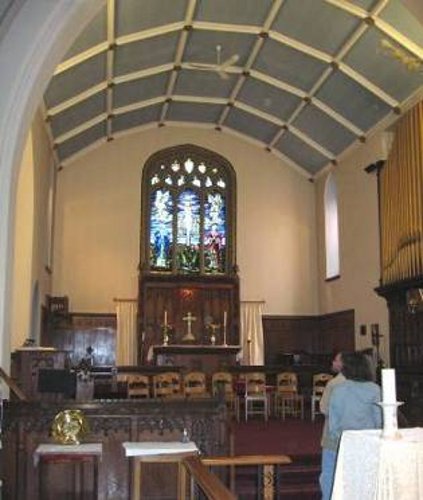
Figure 10: The interior of All Saints
Carisma Church, 280 Main St East, (originally the Anglican Church of St. Thomas) was designed by Albert H. Hills in the Gothic Revival style and built in 1869-1870 of Eramosa dolomite, with a Whirlpool sandstone trim.
The attached building (built as a Sunday School, 16 West Avenue South), was added in 1874 and is very similar. The brick rectory just south of the church was built at about the same time. The tower was added in 1883, and the chancel extended in 1908 (Hamilton's Heritage, v.5, p.148).
The design and stone masonry are very similar to that of the All Saints Church. The main door has two small red granite pillars.
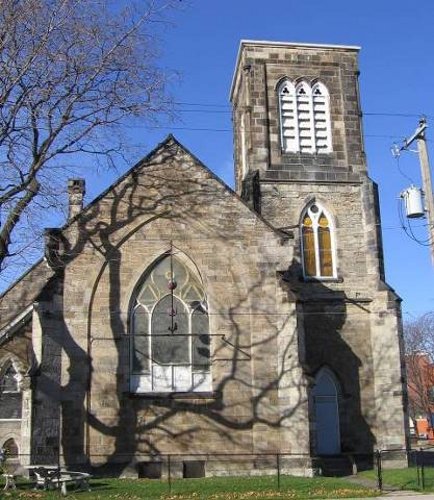
Figure 11: Carisma (Church of Saint Thomas).
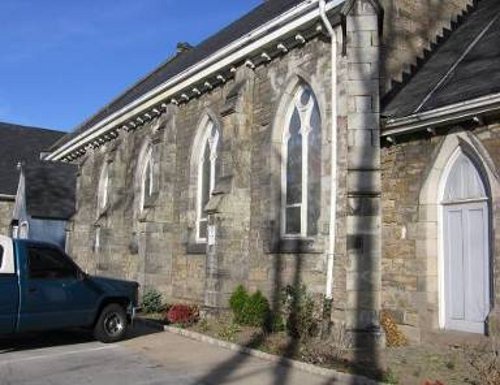
Figure 12: Carisma Church, east side: note design of buttresses, using Whirlpool sandstone caps.
Hughson Street Baptist Church, 375-385 Hughson St North. According to Manson (2006, p.51), the congregation, which had been meeting since 1887 in a frame building, purchased the Hughson Street School for $2,100, and renovated for use as a church.
It is a relatively small building constructed from Eramosa dolomite and Whirlpool sandstone: the masonry is very similar to that in All Saints or Carisma.
The Church of Saint Thomas, therefore, was built some five years earlier than All Saints, and both probably at about the same time as the Hughson Street School, which became the Baptist Church.
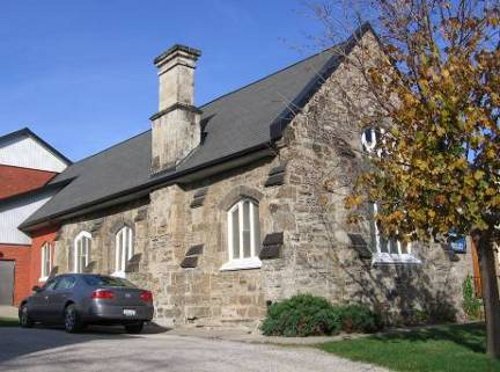
Figure 13: Hughson Street Baptist Church: note similar design of buttresses.
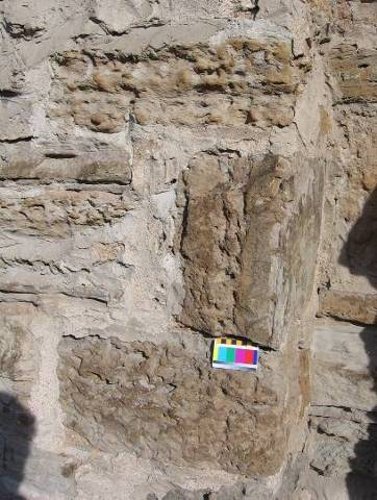
Figure 14: Detail of Hughson Street Baptist, showing different orientations of Eramosa blocks.
These three buildings show resemblances in design and masonry. They were among the first significant buildings to be constructed mainly of Eramosa dolomite, rather than the sandstone favoured for earlier buildings.
Sources: Henley, Brian, 1994. The Grand Old Buildings of Hamilton. The Spectator, 115 p. Manson, Bill, 2003. Footsteps in Time: Exploring Hamilton's Heritage Neighbourhoods. Burlington ON, North Shore Publishing, v.1, 168 p.; v.2, 2006, 59 p.
By GerryM (registered) | Posted March 13, 2012 at 12:00:20
Yes, my wife agrees with you that igneous or metamorphic rocks make the best decorative rocks. It is a tribute to her other qualities that our marriage has lasted more than 50 years. Another geologist (who did work with "hard rocks") was instructed by his wife (a keen gardener) to bring back attractive "gardenite" from his excursions into the Canadian Shield.
Just remember that 75% of the continents, and almost all of the ocean bottoms are covered by sedimentary rocks. Sediments supply most of the energy we now use (petroleum, coal). Some sedimentary rocks make good building stones just because they lack easily weathered minerals. Others (gypsum, phosphates) make good fertilizers.
Comment edited by GerryM on 2012-03-13 12:04:09
You must be logged in to comment.
There are no upcoming events right now.
Why not post one?